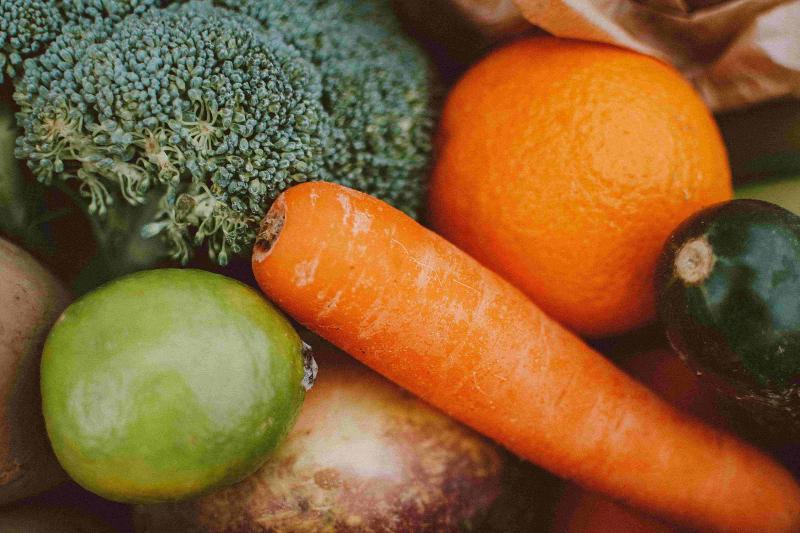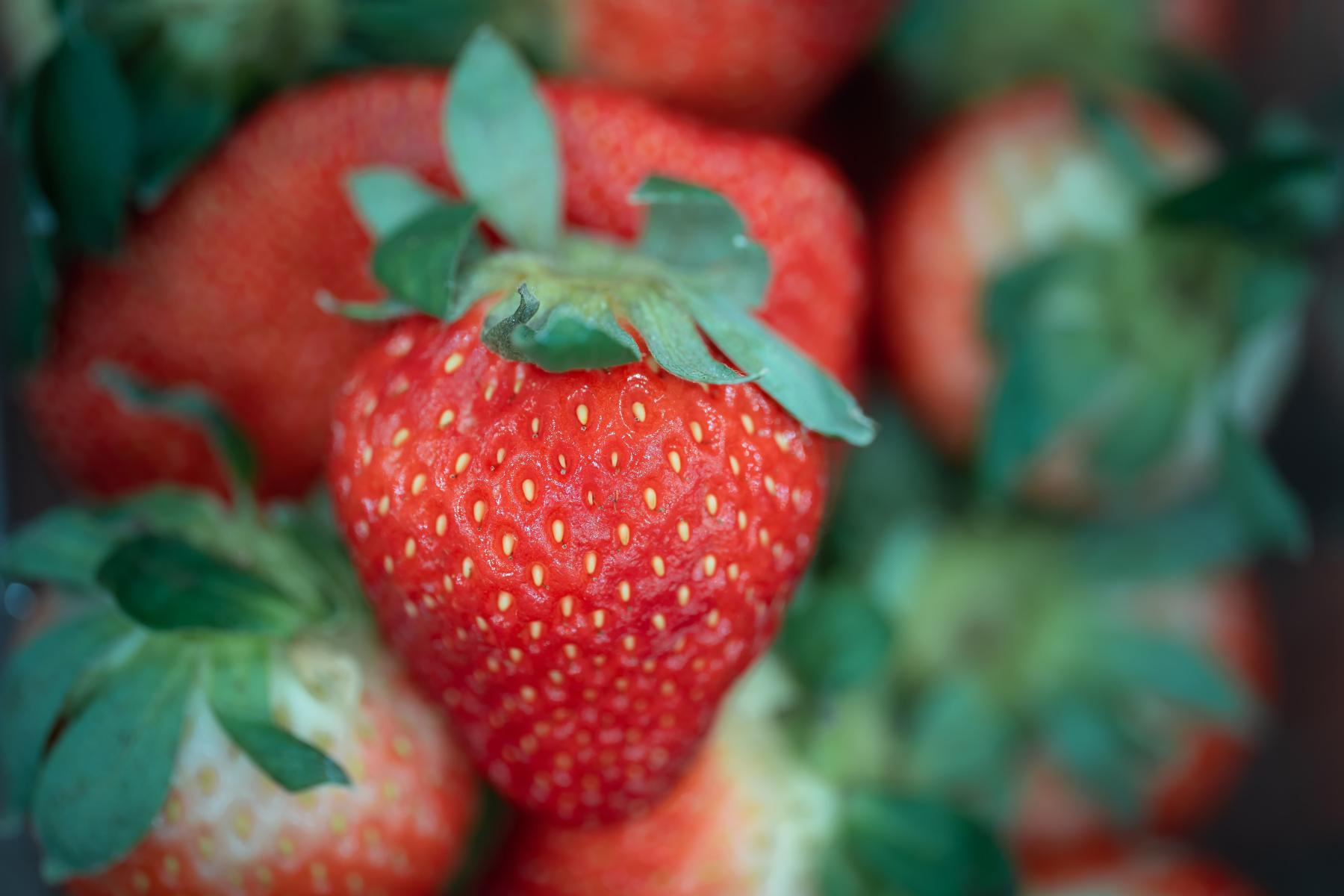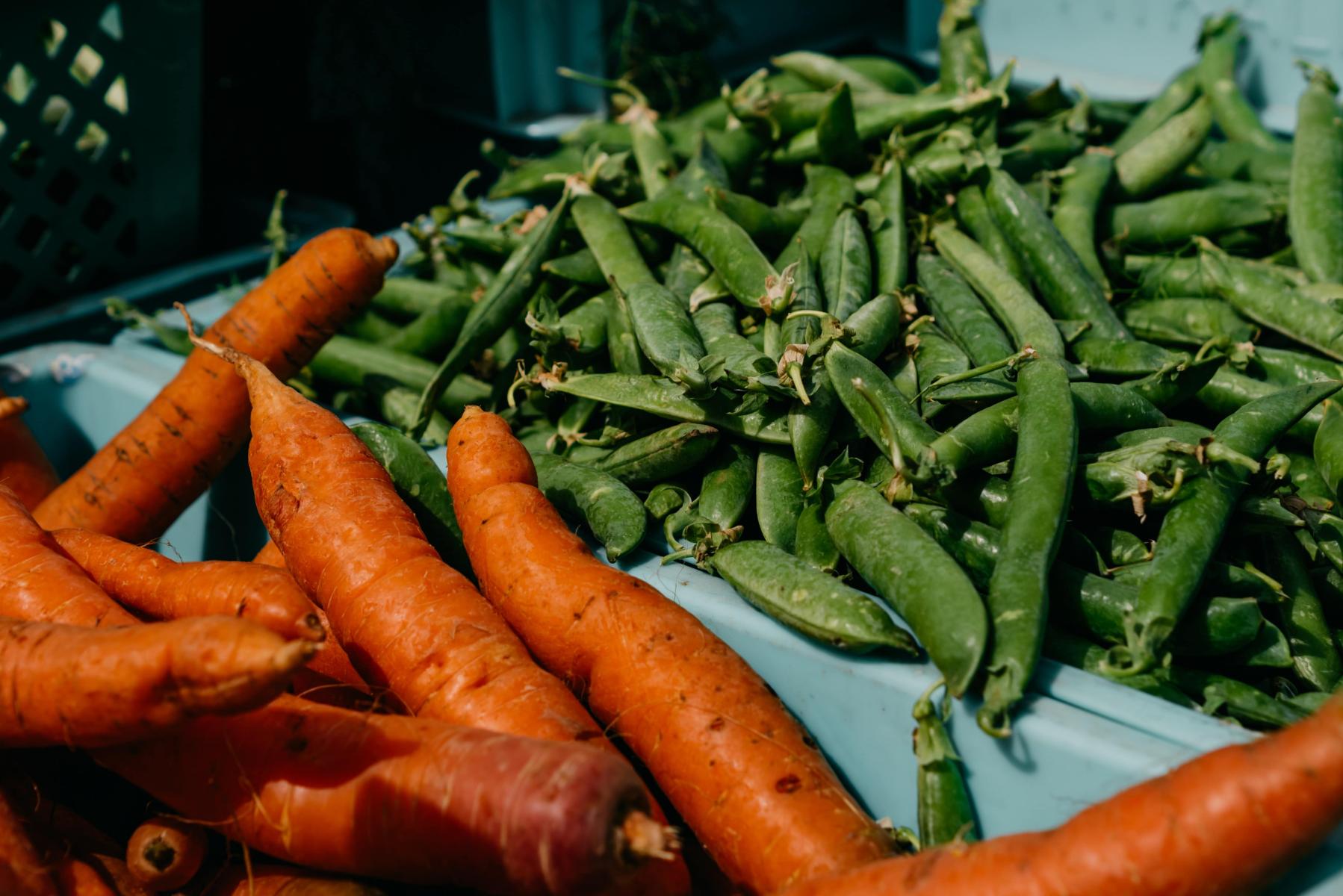When we were children, we were probably encouraged to eat more fruits and vegetables to “grow up to be big and strong.” Let’s take a close look to see what benefits they really have for our bodies.

Carly Hillburn, Dietetic Intern, 2019-2020
Monday, January 9, 2023
Most likely we have all heard hundreds of times that eating fruits and vegetables is good for us....
When we were children, we were probably encouraged to eat more fruits and vegetables to “grow up to be big and strong.” But beyond generally understanding that fruits and vegetables are important for our health, a lot of us might not truly understand why they are so beneficial. We also might not understand how to get the maximum number of benefits from the fruits and vegetables we do eat. Let’s take a close look to see what benefits they really have for our bodies.

Phytochemicals, Fiber, Vitamins, and Minerals
Fruits and vegetables are beneficial because they are excellent sources of fiber, various vitamins, minerals, and phytochemicals. These nutrients work together to help our body function at maximum capacity.
Fiber is beneficial for our gut health and helps keep our bowel movements regular. Vitamins and minerals work to maintain, build, and repair body tissue as well as support different functions in the body. Phytochemicals are bioactive substances in plants that are typically responsible for bright and varying colors. Research is showing that these phytochemicals have a protective effect on humans and help lower the risk of developing chronic diseases.
In fact, research has shown that people who eat more fruits and vegetables over their lifetime are less likely to develop chronic diseases like heart disease or stroke and are less likely to develop cancer.
Now it is important to understand that saying “less likely to develop” does not mean that a person who has eaten lots of fruits and vegetables their whole life will never develop cancer or heart disease, but when we look at large population studies – populations who ate higher amounts of fruits and vegetables had a lower prevalence of chronic diseases.
It’s also important to understand that not every fruit or vegetable has the same benefits. For example, carrots are an excellent source of beta carotene or Vitamin A, which is beneficial for our eyes, skin, and immune system. Meanwhile, raspberries, are very low in Vitamin A, but have a large amount of Vitamin C, which is beneficial for cellular growth and skin and tissue repair.
So, how do we capitalize on the different nutrients in fruits and vegetables?
The answer is to focus on variety, specifically, a variety of colors. Another way to say this would be “Eat the Rainbow” every week. And no – this doesn’t mean opening a pack of Skittles – this means trying to eat multiple servings of different colored fruits and vegetables throughout the week in order the get the maximum benefit and variety in our nutrient intake. Let’s peek at each of the different colors, explain which nutrients give them these beautiful hues, and explore the different benefits of each.

Reds, Blues, and Purples
The red color in fruits and vegetables is most often caused by lycopene and anthocyanins. Lycopene is a carotenoid and powerful antioxidant, which means it helps prevent oxidative damage to our cells. Additionally, many research studies have shown lycopene can be especially beneficial in protecting against cardiovascular disease and can also help reduce the risk of some cancers.
Anthocyanins can also give fruits and vegetables a red, blue, or purple color. Anthocyanins change color depending on the acidity of their environment. When anthocyanins are exposed to an acidic environment, they appear to be red, and will turn blue in a basic environment. Anthocyanins are also considered antioxidants and have been shown to help reduce blood pressure, lower the risk of cardiovascular disease, and protect against certain types of cancers. Some research is even showing that anthocyanins have anti-inflammatory and anti-microbial effects.
| Red Fruits/Vegetables | Purple and Blue Fruits/Vegetables |
|
|
Yellow and Oranges
Fruits and vegetables that tend to be yellow and orange are often rich in carotenoids like beta-carotene and cryptoxanthin. Beta carotene is a bright orange pigment that our bodies use to form Vitamin A. Vitamin A is used by our bodies to maintain our skin, vision, and immune function. Additionally, beta-carotene may also help reduce the risk of developing some types of cancer. Lots of citrus fruits have a yellow or orange color from carotenoids but are also high in Vitamin C. Vitamin C aids in cellular growth, tissue repair, boosts the immune system, and acts as an antioxidant to protect cells from damage. Vitamin C also helps your body absorb more iron!
| Yellow and Orange Fruits/Vegetables |
|
Greens
The green color of fruits and vegetables is typically caused by chlorophyll, which is a dark green pigment. Green fruits and vegetables are also generally good sources of lutein, isothiocyanates, isoflavones, vitamin K, and folate. Lutein has been found to reduce the risk of age-related macular degeneration and the development of cataracts. Isothiocyanates may help reduce the risk of cancer. Vitamin K is beneficial in blood clot formation, and folate is an essential B vitamin that plays a vital role in neural tube formation during pregnancy.
| Green Fruits/Vegetables |
|
Whites and Browns
Even when a fruit or vegetable does not have bright color, they are still full of beneficial nutrients. Typically, these fruits and vegetables have phytochemicals called flavonoids, which are often colorless. These nutrients have been linked to a lower prevalence of cancer and have protective properties like acting as anti-inflammatory agents to protect cells from damage.
| White and Brown Fruits/Vegetables |
|
While this might seem overwhelming, the key is to keep it simple and focus on a wide variety of colors throughout the week. It's incredibly difficult to eat every color, every single day, and research shows that intake over time is more important than daily intake. So relax! Think about ways you can eat a rainbow throughout the week. Overall, variety is the key to enjoying all the potential benefits of fruits and vegetables.
References
Schaeffer, J. (2008). Color Me Healthy—Eating for a Rainbow of Benefits. Retrieved June 11, 2020, from https://www.todaysdietitian.com/newarchives/110308p34.shtml
He, F. J., Nowson, C. A., Lucas, M., & MacGregor, G. A. (2007). Increased consumption of fruit and vegetables is related to a reduced risk of coronary heart disease: Meta-analysis of cohort studies. Journal of Human Hypertension, 21(9), 717–728. https://doi.org/10.1038/sj.jhh.1002212
He, Feng J, Nowson, C. A., & MacGregor, G. A. (2006). Fruit and vegetable consumption and stroke: Meta-analysis of cohort studies. The Lancet, 367(9507), 320–326. https://doi.org/10.1016/S0140-6736(06)68069-0
Khoo, H. E., Azlan, A., Tang, S. T., & Lim, S. M. (2017). Anthocyanidins and anthocyanins: Colored pigments as food, pharmaceutical ingredients, and the potential health benefits. Food & Nutrition Research, 61(1). https://doi.org/10.1080/16546628.2017.1361779
Liu, R. H. (2003). Health benefits of fruit and vegetables are from additive and synergistic combinations of phytochemicals. The American Journal of Clinical Nutrition, 78(3), 517S520S. https://doi.org/10.1093/ajcn/78.3.517S
Müller, L., Caris-Veyrat, C., Lowe, G., & Böhm, V. (2016). Lycopene and Its Antioxidant Role in the Prevention of Cardiovascular Diseases—A Critical Review. Critical Reviews in Food Science and Nutrition, 56(11), 18681879. https://doi.org/10.1080/10408398.2013.801827
Office of Dietary Supplements—Folate. (2020). Retrieved June 12, 2020, from https://ods.od.nih.gov/factsheets/Folate-HealthProfessional/
Office of Dietary Supplements—Vitamin C. (2020). Retrieved June 12, 2020, from https://ods.od.nih.gov/factsheets/VitaminC-HealthProfessional/
Panche, A. N., Diwan, A. D., & Chandra, S. R. (2016). Flavonoids: An overview. Journal of Nutritional Science, 5. https://doi.org/10.1017/jns.2016.41
Ranard, K. M., Jeon, S., Mohn, E. S., Griffiths, J. C., Johnson, E. J., & Erdman, J. W. (2017). Dietary guidance for lutein: Consideration for intake recommendations is scientifically supported. European Journal of Nutrition, 56(3), 37–42. https://doi.org/10.1007/s00394-017-1580-2
Rodriguez-Concepcion, M., Avalos, J., Bonet, M. L., Boronat, A., Gomez-Gomez, L., Hornero-Mendez, D., Limon, M. C., Meléndez-Martínez, A. J., Olmedilla-Alonso, B., Palou, A., Ribot, J., Rodrigo, M. J., Zacarias, L., & Zhu, C. (2018). A global perspective on carotenoids: Metabolism, biotechnology, and benefits for nutrition and health. Progress in Lipid Research, 70, 62–93. https://doi.org/10.1016/j.plipres.2018.04.004
Vainio, H., & Weiderpass, E. (2006). Fruit and Vegetables in Cancer Prevention. Nutrition and Cancer, 54(1), 111142. https://doi.org/10.1207/s15327914nc5401_13
Van Duyn, M. A. S., & Pivonka, E. (2000). Overview of the Health Benefits of Fruit and Vegetable Consumption for the Dietetics Professional: Selected Literature. Journal of the American Dietetic Association, 100(12), 1511–1521. https://doi.org/10.1016/S0002-8223(00)00420-X



